-

Oct
02
Interpretive Summary: Circular bioeconomy: policy and regulatory impacts on livestock production systems

The evolution of the current linear production system into a circular approach, with the use of increased quantities of biomass, requires the development of appropriate policies to encourage and potentially incentivize the circular use of biomass. This development will lead to both the potential use of new materials and allow for the safe use of currently wasted resources from sectors such as livestock production systems, including processing wastes (e.g., whey, wool, wool grease, wastewaters) or manures to produce products, such as feed and fertilizers.
Read more
-

Sep
25
Washington Roundup – September 2025
.png?sfvrsn=485f5ad1_1)
With lawmakers away from Washington the week of September 22nd, they will return on September 29th with little time to avert a government shutdown at the end of the month. On September 17th, House Republicans successfully passed a “clean” continuing resolution by a vote of 217-212. The measure would keep the government funded through November 21st.
Read more
-

Sep
18
Interpretive Summary: The effect of increasing standardized ileal digestible histidine:lysine ratio during lactation on sow and litter performance
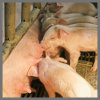
Added histidine (His) in lactating dairy cattle diets has been observed to increase milk production. This suggests that histidine might be a limiting amino acid in lactating dairy cows fed grain and grass silage-based diets. However, there is limited data available on the effects of increasing dietary histidine on performance of lactating sows.
Read more
-

Sep
18
Interpretive Summary: Association of glutamine supplementation during the early suckling period with growth, weaning, and lipopolysaccharide induced stress in low birthweight piglets
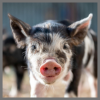
Low birthweight piglets suffer from impaired postnatal development that negatively affects organ function, bodyweight, and health at vulnerable life stages. This leads to increased disease susceptibility and mortality, especially in male piglets.
Read more
-

Sep
18
Interpretive Summary: Vitamin D₃ inhibits proliferation and the early stage of adipogenic differentiation but promotes gene expression and lipid accumulation during the late stage of adipogenic differentiation in intramuscular adipose cells of Korean...

This study investigated the effects of vitamin D₃ on the growth and differentiation of adipose cells derived from muscle tissue in Korean native cattle. Vitamin D₃ reduced cell proliferation during the growth phase, limiting the number of adipose cells.
Read more
-

Sep
18
Interpretive Summary: Protein quality of chicken-based protein sources evaluated by precision-fed cecectomized rooster assay
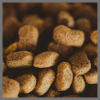
This study evaluated the quality of different chicken-based protein sources for animal feed. Using a special method involving roosters with removed ceca (part of their digestive system), we measured how well the proteins from 4 types of chicken products were digested.
Read more
-

Sep
18
Interpretive Summary: Effects of algal oil as an alternative to fish oil in feline foods on serum concentrations of eicosapentaenoic acid and docosahexaenoic acid

Consumption of fish oil, which contains the omega-3 fatty acids eicosapentaenoic acid (EPA) and docosahexaenoic acid (DHA), has health benefits. There is concern about the limited availability of fish stocks/oil, so alternative sources of EPA and DHA are sought.
Read more
-

Sep
18
Interpretive Summary: Use of a lidocaine impregnated band improved behavioral and physiological indicators of pain during tail docking in lambs
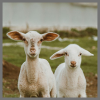
Tail docking, the removal of the lamb’s tail, is a common practice on sheep operations to improve hygiene and reduce the risk of flystrike, a painful maggot infestation. Unfortunately, the rubber rings used to dock tails can cause pain and discomfort.
Read more
-

Sep
18
Interpretive Summary: Effects of isoflavone supplementation, via red clover hay, on the growth and postgraze physiological recovery of beef steers grazing endophyte-infected tall fescue pastures
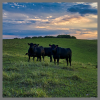
Endophyte-infected (E+) tall fescue is an important forage for livestock operations, but cattle consuming this forage can develop fescue toxicosis with symptoms including depressed prolactin, vasoconstriction, and decreased growth rates that can persist as long as 5 wk after grazing. Isoflavones found in forage legumes, such as red clover, can alleviate fescue toxicosis symptoms.
Read more
-

Sep
16
The Giving Herd - ASAS Foundation Newsletter - September 2025
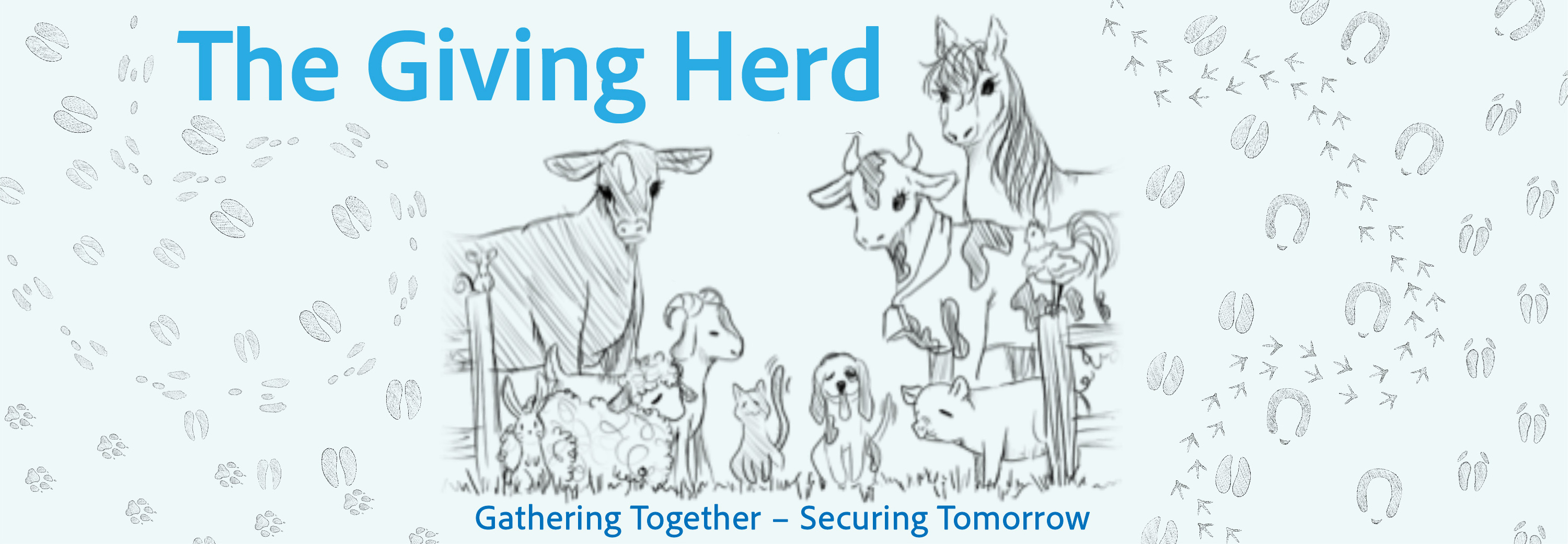
The September Edition of The Giving Herd, an ASAS Foundation Newsletter
Read more
-

Sep
11
Interpretive Summary: Effect of grape pomace supplementation in mid-lactation dairy ewes on production and quality of milk and methane emissions

The use of grape pomace (GP), a byproduct arising from the winemaking, in the diet of dairy sheep is a great strategy to improve the sustainability of the livestock sector and to enhance the quality of dairy products. The recycle of byproducts from the agro-industrial chain allows to reduce the cost of the ration and to decrease the carbon footprint of the animal feed stuffs.
Read more
-

Sep
11
Interpretive Summary: Endo-1,3-β-D-glucanase activity influences in vitro ruminal fermentation of diets varying in forage:concentrate
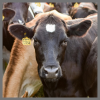
The ongoing global demand to discover alternative strategies to mitigate methane emissions from farm animal production continues to rise. No studies have investigated the potential effects of breaking down the cell walls of methane-producing archaeal species that are responsible for ruminal methanogenesis using endo-1,3-β-D-glucanase.
Read more
-

Sep
11
Interpretive Summary: The effect of Aspergillus oryzae fermentation product on production parameters, rumen environment, and fiber degradability of Jersey cows grazing ryegrass-dominant pasture
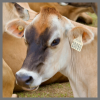
Due to health concerns associated with the sub-therapeutic use of antibiotics in livestock production, the use of antibiotics as a feed additive has been prohibited in many countries. For this reason, a demand for non-antibiotic alternatives able to increase feed efficiency has been created.
Read more
-

Sep
11
Interpretive Summary: Amino acid digestibility reduction in heat-damaged meat and bone meal fed to broiler chickens and growing pigs
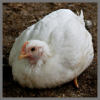
When pigs and beef cattle are processed in a slaughterhouse, the inedible parts are often used to produce meat and bone meal, which is a valuable byproduct for pigs and chickens. However, the production of meat and bone meal requires heating, which can reduce the amino acid (AA) digestibility of this byproduct in pigs and chickens.
Read more
-

Sep
11
Interpretive Summary: Effects of Bacillus coagulans (GBI-30, 6086) supplementation on apparent total tract nutrient digestibility and the fecal characteristics and metabolites, immunity, and microbiota of healthy adult dogs

Bacillus coagulans GBI-30, 6086, is a commercially available, lactic-acid-producing, spore-forming bacteria that exhibits probiotic characteristics. Twelve healthy adult English Pointer dogs were fed the same diet, but supplemented with B. coagulans or a placebo via gelatin capsules with the following treatments tested: (1) basal diet + placebo (control; 250 mg maltodextrin); (2) basal diet + B. coagulans [low dose; 5 × 108 colony-forming units (CFU)/d]; and (3) basal diet + B. coagulans (high dose; 2.5 × 109 CFU/d).
Read more
-

Sep
11
Interpretive Summary: Genome-wide association analysis reveals the genetic basis of ionomic variation in duck breast muscle

Meat plays an important role in alleviating micronutrient deficiencies, particularly due to its richness in various highly bioavailable mineral elements. However, how minerals accumulate in meat and whether genetics plays a role is still poorly understood.
Read more
-

Sep
11
Interpretive Summary: The gut microbiota as a predictor of feed efficiency and feeding behavior in Iberian pigs
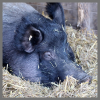
In modern pig farming, new technologies are helping farmers better understand how pigs grow and use their feed. One key area of interest is feed efficiency, which considers the animal’s ability to convert feed into body weight. Another important factor is feeding behavior, which has been linked to feed efficiency. In addition, current research is focusing on the gut microbiota to assess how it influences animal health and growth.
Read more
-

Sep
04
Interpretive Summary: Levels of physically effective neutral detergent fiber from forage and narasin inclusion: performance, carcass traits, meat quality, gastrointestinal fermentation, and rumen histology in feedlot lambs
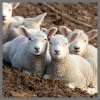
This study explored how different levels of physically effective neutral detergent fiber from forage (peNDF-F) and the feed additive narasin affect the performance, carcass traits, meat quality, gastrointestinal fermentation, and ruminal papillae development of feedlot lambs consuming high-concentrate diets. Lambs fed higher levels of fiber in the diet (104 g/kg of peNDF-F) consumed more feed, but this did not lead to better weight gain and reduced feed efficiency.
Read more
-

Sep
04
Interpretive Summary: A pooled analysis of seven large pen feedlot studies: influence of Megasphaera elsdenii NCIMB 41125 on late-term mortality and growth performance of feedlot steers and heifers following terminal processing
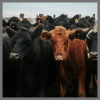
Large pen feedlot studies (n = 7) with heifers and steers (n = 17,571) were conducted in North America with the objective to determine the effects of orally administered Megasphaera elsdenii NCIMB 41125 (Lactipro; LP) at terminal processing on subsequent mortality and growth performance. The death rate during the feeding period following terminal processing was 1.57 times greater in cattle not administered LP.
Read more
-

Sep
04
Interpretive Summary: Impact of supplementing different sources of non-protein nitrogen on ruminal fermentation, nutrient digestibility, and microbial protein synthesis in beef cattle consuming a corn silage-based diet
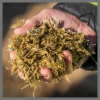
Ruminants can use non-protein nitrogen (NPN) due to the symbiotic relationship with rumen microbes; however, there is limited information on supplementing different NPN mixtures on ruminal fermentation and microbial protein synthesis. Twelve American Aberdeen steers were used in a replicated and balanced 3 × 3 Latin square design with 3 periods of 35 d each. Urea (U), urea-biuret (UB), and urea-biuret-nitrate (UBN) mixtures were supplemented in an isonitrogenous corn silage-based diet.
Read more
 OctInterpretive Summary: Circular bioeconomy: policy and regulatory impacts on livestock production systems
OctInterpretive Summary: Circular bioeconomy: policy and regulatory impacts on livestock production systems The evolution of the current linear production system into a circular approach, with the use of increased quantities of biomass, requires the development of appropriate policies to encourage and potentially incentivize the circular use of biomass. This development will lead to both the potential use of new materials and allow for the safe use of currently wasted resources from sectors such as livestock production systems, including processing wastes (e.g., whey, wool, wool grease, wastewaters) or manures to produce products, such as feed and fertilizers.
The evolution of the current linear production system into a circular approach, with the use of increased quantities of biomass, requires the development of appropriate policies to encourage and potentially incentivize the circular use of biomass. This development will lead to both the potential use of new materials and allow for the safe use of currently wasted resources from sectors such as livestock production systems, including processing wastes (e.g., whey, wool, wool grease, wastewaters) or manures to produce products, such as feed and fertilizers. SepWashington Roundup – September 2025
SepWashington Roundup – September 2025.png?sfvrsn=485f5ad1_1) With lawmakers away from Washington the week of September 22nd, they will return on September 29th with little time to avert a government shutdown at the end of the month. On September 17th, House Republicans successfully passed a “clean” continuing resolution by a vote of 217-212. The measure would keep the government funded through November 21st.
With lawmakers away from Washington the week of September 22nd, they will return on September 29th with little time to avert a government shutdown at the end of the month. On September 17th, House Republicans successfully passed a “clean” continuing resolution by a vote of 217-212. The measure would keep the government funded through November 21st. SepInterpretive Summary: The effect of increasing standardized ileal digestible histidine:lysine ratio during lactation on sow and litter performance
SepInterpretive Summary: The effect of increasing standardized ileal digestible histidine:lysine ratio during lactation on sow and litter performance Added histidine (His) in lactating dairy cattle diets has been observed to increase milk production. This suggests that histidine might be a limiting amino acid in lactating dairy cows fed grain and grass silage-based diets. However, there is limited data available on the effects of increasing dietary histidine on performance of lactating sows.
Added histidine (His) in lactating dairy cattle diets has been observed to increase milk production. This suggests that histidine might be a limiting amino acid in lactating dairy cows fed grain and grass silage-based diets. However, there is limited data available on the effects of increasing dietary histidine on performance of lactating sows. SepInterpretive Summary: Association of glutamine supplementation during the early suckling period with growth, weaning, and lipopolysaccharide induced stress in low birthweight piglets
SepInterpretive Summary: Association of glutamine supplementation during the early suckling period with growth, weaning, and lipopolysaccharide induced stress in low birthweight piglets Low birthweight piglets suffer from impaired postnatal development that negatively affects organ function, bodyweight, and health at vulnerable life stages. This leads to increased disease susceptibility and mortality, especially in male piglets.
Low birthweight piglets suffer from impaired postnatal development that negatively affects organ function, bodyweight, and health at vulnerable life stages. This leads to increased disease susceptibility and mortality, especially in male piglets. SepInterpretive Summary: Vitamin D₃ inhibits proliferation and the early stage of adipogenic differentiation but promotes gene expression and lipid accumulation during the late stage of adipogenic differentiation in intramuscular adipose cells of Korean...
SepInterpretive Summary: Vitamin D₃ inhibits proliferation and the early stage of adipogenic differentiation but promotes gene expression and lipid accumulation during the late stage of adipogenic differentiation in intramuscular adipose cells of Korean... This study investigated the effects of vitamin D₃ on the growth and differentiation of adipose cells derived from muscle tissue in Korean native cattle. Vitamin D₃ reduced cell proliferation during the growth phase, limiting the number of adipose cells.
This study investigated the effects of vitamin D₃ on the growth and differentiation of adipose cells derived from muscle tissue in Korean native cattle. Vitamin D₃ reduced cell proliferation during the growth phase, limiting the number of adipose cells. SepInterpretive Summary: Protein quality of chicken-based protein sources evaluated by precision-fed cecectomized rooster assay
SepInterpretive Summary: Protein quality of chicken-based protein sources evaluated by precision-fed cecectomized rooster assay This study evaluated the quality of different chicken-based protein sources for animal feed. Using a special method involving roosters with removed ceca (part of their digestive system), we measured how well the proteins from 4 types of chicken products were digested.
This study evaluated the quality of different chicken-based protein sources for animal feed. Using a special method involving roosters with removed ceca (part of their digestive system), we measured how well the proteins from 4 types of chicken products were digested. SepInterpretive Summary: Effects of algal oil as an alternative to fish oil in feline foods on serum concentrations of eicosapentaenoic acid and docosahexaenoic acid
SepInterpretive Summary: Effects of algal oil as an alternative to fish oil in feline foods on serum concentrations of eicosapentaenoic acid and docosahexaenoic acid Consumption of fish oil, which contains the omega-3 fatty acids eicosapentaenoic acid (EPA) and docosahexaenoic acid (DHA), has health benefits. There is concern about the limited availability of fish stocks/oil, so alternative sources of EPA and DHA are sought.
Consumption of fish oil, which contains the omega-3 fatty acids eicosapentaenoic acid (EPA) and docosahexaenoic acid (DHA), has health benefits. There is concern about the limited availability of fish stocks/oil, so alternative sources of EPA and DHA are sought. SepInterpretive Summary: Use of a lidocaine impregnated band improved behavioral and physiological indicators of pain during tail docking in lambs
SepInterpretive Summary: Use of a lidocaine impregnated band improved behavioral and physiological indicators of pain during tail docking in lambs Tail docking, the removal of the lamb’s tail, is a common practice on sheep operations to improve hygiene and reduce the risk of flystrike, a painful maggot infestation. Unfortunately, the rubber rings used to dock tails can cause pain and discomfort.
Tail docking, the removal of the lamb’s tail, is a common practice on sheep operations to improve hygiene and reduce the risk of flystrike, a painful maggot infestation. Unfortunately, the rubber rings used to dock tails can cause pain and discomfort. SepInterpretive Summary: Effects of isoflavone supplementation, via red clover hay, on the growth and postgraze physiological recovery of beef steers grazing endophyte-infected tall fescue pastures
SepInterpretive Summary: Effects of isoflavone supplementation, via red clover hay, on the growth and postgraze physiological recovery of beef steers grazing endophyte-infected tall fescue pastures Endophyte-infected (E+) tall fescue is an important forage for livestock operations, but cattle consuming this forage can develop fescue toxicosis with symptoms including depressed prolactin, vasoconstriction, and decreased growth rates that can persist as long as 5 wk after grazing. Isoflavones found in forage legumes, such as red clover, can alleviate fescue toxicosis symptoms.
Endophyte-infected (E+) tall fescue is an important forage for livestock operations, but cattle consuming this forage can develop fescue toxicosis with symptoms including depressed prolactin, vasoconstriction, and decreased growth rates that can persist as long as 5 wk after grazing. Isoflavones found in forage legumes, such as red clover, can alleviate fescue toxicosis symptoms. SepThe Giving Herd - ASAS Foundation Newsletter - September 2025
SepThe Giving Herd - ASAS Foundation Newsletter - September 2025 The September Edition of The Giving Herd, an ASAS Foundation Newsletter
The September Edition of The Giving Herd, an ASAS Foundation Newsletter SepInterpretive Summary: Effect of grape pomace supplementation in mid-lactation dairy ewes on production and quality of milk and methane emissions
SepInterpretive Summary: Effect of grape pomace supplementation in mid-lactation dairy ewes on production and quality of milk and methane emissions The use of grape pomace (GP), a byproduct arising from the winemaking, in the diet of dairy sheep is a great strategy to improve the sustainability of the livestock sector and to enhance the quality of dairy products. The recycle of byproducts from the agro-industrial chain allows to reduce the cost of the ration and to decrease the carbon footprint of the animal feed stuffs.
The use of grape pomace (GP), a byproduct arising from the winemaking, in the diet of dairy sheep is a great strategy to improve the sustainability of the livestock sector and to enhance the quality of dairy products. The recycle of byproducts from the agro-industrial chain allows to reduce the cost of the ration and to decrease the carbon footprint of the animal feed stuffs. SepInterpretive Summary: Endo-1,3-β-D-glucanase activity influences in vitro ruminal fermentation of diets varying in forage:concentrate
SepInterpretive Summary: Endo-1,3-β-D-glucanase activity influences in vitro ruminal fermentation of diets varying in forage:concentrate The ongoing global demand to discover alternative strategies to mitigate methane emissions from farm animal production continues to rise. No studies have investigated the potential effects of breaking down the cell walls of methane-producing archaeal species that are responsible for ruminal methanogenesis using endo-1,3-β-D-glucanase.
The ongoing global demand to discover alternative strategies to mitigate methane emissions from farm animal production continues to rise. No studies have investigated the potential effects of breaking down the cell walls of methane-producing archaeal species that are responsible for ruminal methanogenesis using endo-1,3-β-D-glucanase. SepInterpretive Summary: The effect of Aspergillus oryzae fermentation product on production parameters, rumen environment, and fiber degradability of Jersey cows grazing ryegrass-dominant pasture
SepInterpretive Summary: The effect of Aspergillus oryzae fermentation product on production parameters, rumen environment, and fiber degradability of Jersey cows grazing ryegrass-dominant pasture Due to health concerns associated with the sub-therapeutic use of antibiotics in livestock production, the use of antibiotics as a feed additive has been prohibited in many countries. For this reason, a demand for non-antibiotic alternatives able to increase feed efficiency has been created.
Due to health concerns associated with the sub-therapeutic use of antibiotics in livestock production, the use of antibiotics as a feed additive has been prohibited in many countries. For this reason, a demand for non-antibiotic alternatives able to increase feed efficiency has been created. SepInterpretive Summary: Amino acid digestibility reduction in heat-damaged meat and bone meal fed to broiler chickens and growing pigs
SepInterpretive Summary: Amino acid digestibility reduction in heat-damaged meat and bone meal fed to broiler chickens and growing pigs When pigs and beef cattle are processed in a slaughterhouse, the inedible parts are often used to produce meat and bone meal, which is a valuable byproduct for pigs and chickens. However, the production of meat and bone meal requires heating, which can reduce the amino acid (AA) digestibility of this byproduct in pigs and chickens.
When pigs and beef cattle are processed in a slaughterhouse, the inedible parts are often used to produce meat and bone meal, which is a valuable byproduct for pigs and chickens. However, the production of meat and bone meal requires heating, which can reduce the amino acid (AA) digestibility of this byproduct in pigs and chickens. SepInterpretive Summary: Effects of Bacillus coagulans (GBI-30, 6086) supplementation on apparent total tract nutrient digestibility and the fecal characteristics and metabolites, immunity, and microbiota of healthy adult dogs
SepInterpretive Summary: Effects of Bacillus coagulans (GBI-30, 6086) supplementation on apparent total tract nutrient digestibility and the fecal characteristics and metabolites, immunity, and microbiota of healthy adult dogs Bacillus coagulans GBI-30, 6086, is a commercially available, lactic-acid-producing, spore-forming bacteria that exhibits probiotic characteristics. Twelve healthy adult English Pointer dogs were fed the same diet, but supplemented with B. coagulans or a placebo via gelatin capsules with the following treatments tested: (1) basal diet + placebo (control; 250 mg maltodextrin); (2) basal diet + B. coagulans [low dose; 5 × 108 colony-forming units (CFU)/d]; and (3) basal diet + B. coagulans (high dose; 2.5 × 109 CFU/d).
Bacillus coagulans GBI-30, 6086, is a commercially available, lactic-acid-producing, spore-forming bacteria that exhibits probiotic characteristics. Twelve healthy adult English Pointer dogs were fed the same diet, but supplemented with B. coagulans or a placebo via gelatin capsules with the following treatments tested: (1) basal diet + placebo (control; 250 mg maltodextrin); (2) basal diet + B. coagulans [low dose; 5 × 108 colony-forming units (CFU)/d]; and (3) basal diet + B. coagulans (high dose; 2.5 × 109 CFU/d). SepInterpretive Summary: Genome-wide association analysis reveals the genetic basis of ionomic variation in duck breast muscle
SepInterpretive Summary: Genome-wide association analysis reveals the genetic basis of ionomic variation in duck breast muscle Meat plays an important role in alleviating micronutrient deficiencies, particularly due to its richness in various highly bioavailable mineral elements. However, how minerals accumulate in meat and whether genetics plays a role is still poorly understood.
Meat plays an important role in alleviating micronutrient deficiencies, particularly due to its richness in various highly bioavailable mineral elements. However, how minerals accumulate in meat and whether genetics plays a role is still poorly understood. SepInterpretive Summary: The gut microbiota as a predictor of feed efficiency and feeding behavior in Iberian pigs
SepInterpretive Summary: The gut microbiota as a predictor of feed efficiency and feeding behavior in Iberian pigs In modern pig farming, new technologies are helping farmers better understand how pigs grow and use their feed. One key area of interest is feed efficiency, which considers the animal’s ability to convert feed into body weight. Another important factor is feeding behavior, which has been linked to feed efficiency. In addition, current research is focusing on the gut microbiota to assess how it influences animal health and growth.
In modern pig farming, new technologies are helping farmers better understand how pigs grow and use their feed. One key area of interest is feed efficiency, which considers the animal’s ability to convert feed into body weight. Another important factor is feeding behavior, which has been linked to feed efficiency. In addition, current research is focusing on the gut microbiota to assess how it influences animal health and growth. SepInterpretive Summary: Levels of physically effective neutral detergent fiber from forage and narasin inclusion: performance, carcass traits, meat quality, gastrointestinal fermentation, and rumen histology in feedlot lambs
SepInterpretive Summary: Levels of physically effective neutral detergent fiber from forage and narasin inclusion: performance, carcass traits, meat quality, gastrointestinal fermentation, and rumen histology in feedlot lambs This study explored how different levels of physically effective neutral detergent fiber from forage (peNDF-F) and the feed additive narasin affect the performance, carcass traits, meat quality, gastrointestinal fermentation, and ruminal papillae development of feedlot lambs consuming high-concentrate diets. Lambs fed higher levels of fiber in the diet (104 g/kg of peNDF-F) consumed more feed, but this did not lead to better weight gain and reduced feed efficiency.
This study explored how different levels of physically effective neutral detergent fiber from forage (peNDF-F) and the feed additive narasin affect the performance, carcass traits, meat quality, gastrointestinal fermentation, and ruminal papillae development of feedlot lambs consuming high-concentrate diets. Lambs fed higher levels of fiber in the diet (104 g/kg of peNDF-F) consumed more feed, but this did not lead to better weight gain and reduced feed efficiency. SepInterpretive Summary: A pooled analysis of seven large pen feedlot studies: influence of Megasphaera elsdenii NCIMB 41125 on late-term mortality and growth performance of feedlot steers and heifers following terminal processing
SepInterpretive Summary: A pooled analysis of seven large pen feedlot studies: influence of Megasphaera elsdenii NCIMB 41125 on late-term mortality and growth performance of feedlot steers and heifers following terminal processing Large pen feedlot studies (n = 7) with heifers and steers (n = 17,571) were conducted in North America with the objective to determine the effects of orally administered Megasphaera elsdenii NCIMB 41125 (Lactipro; LP) at terminal processing on subsequent mortality and growth performance. The death rate during the feeding period following terminal processing was 1.57 times greater in cattle not administered LP.
Large pen feedlot studies (n = 7) with heifers and steers (n = 17,571) were conducted in North America with the objective to determine the effects of orally administered Megasphaera elsdenii NCIMB 41125 (Lactipro; LP) at terminal processing on subsequent mortality and growth performance. The death rate during the feeding period following terminal processing was 1.57 times greater in cattle not administered LP. SepInterpretive Summary: Impact of supplementing different sources of non-protein nitrogen on ruminal fermentation, nutrient digestibility, and microbial protein synthesis in beef cattle consuming a corn silage-based diet
SepInterpretive Summary: Impact of supplementing different sources of non-protein nitrogen on ruminal fermentation, nutrient digestibility, and microbial protein synthesis in beef cattle consuming a corn silage-based diet Ruminants can use non-protein nitrogen (NPN) due to the symbiotic relationship with rumen microbes; however, there is limited information on supplementing different NPN mixtures on ruminal fermentation and microbial protein synthesis. Twelve American Aberdeen steers were used in a replicated and balanced 3 × 3 Latin square design with 3 periods of 35 d each. Urea (U), urea-biuret (UB), and urea-biuret-nitrate (UBN) mixtures were supplemented in an isonitrogenous corn silage-based diet.
Ruminants can use non-protein nitrogen (NPN) due to the symbiotic relationship with rumen microbes; however, there is limited information on supplementing different NPN mixtures on ruminal fermentation and microbial protein synthesis. Twelve American Aberdeen steers were used in a replicated and balanced 3 × 3 Latin square design with 3 periods of 35 d each. Urea (U), urea-biuret (UB), and urea-biuret-nitrate (UBN) mixtures were supplemented in an isonitrogenous corn silage-based diet.



